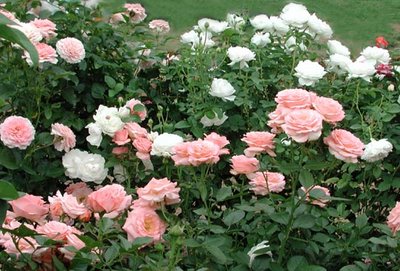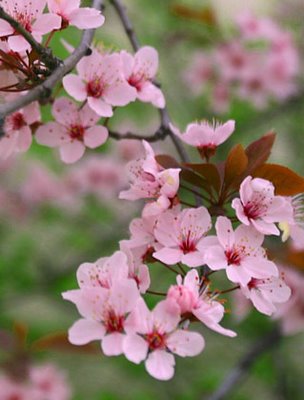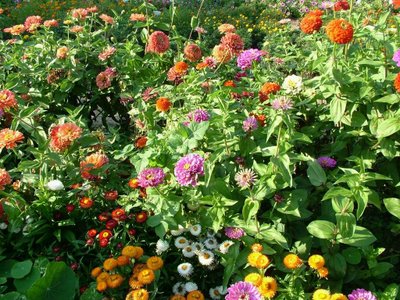Colours In Garden

In arranging a garden, the alternation of light and shade is as important as the sensitive grouping of shapes and colours. The lightest element is always the sky, second place is taken by a surface of water, lawns are rather darker, followed by deciduous trees and shrubs, and lastly conifers -- of which the darkest is the yew. Among these trees and shrubs, however, there are some with different-coloured leaves, for instance silver: the Silver-berry, Sea Buckthorn, and Silver Spruce are nearly as light as water.
The various shades of trees and shrubs can be used to stress or reinforce the character of certain parts of the garden. For instance, you can plant conifers in the dark, shady parts and light-coloured deciduous trees in the light places. The sunniest places are best reserved for the glowing colours of flowers, the shady spots being used for rest.

Colours heighten the effect of the composition, act on the emotions and evoke certain moods. The artistic effect of colours may depend on the use of just one, or on a variety of combinations.
The use of one colour is very effective in gardens planned in a more or less regular or ornamental style, especially in large areas of grass, mirrored in ponds, or in carpets of flowers. However, this use of colour is mostly foreign to natural landscape compositions.

Colour combinations are much more frequent than the use of one colour and shades of it, but in a planned composition these cannot be left to chance. Though there is no hard and fast rule for making such combinations, there are a few principles that should be observed.

The traditional scheme of secondary or complementary colours can be seen on what is called Ostawald's colour cycle. Three sections of a circle are coloured with the primary colours -- red, yellow and blue. By mixing two neighbouring colours we obtain orange, green and violet. The complementary colours are those that are opposite one another in the circle, ie. red and green, yellow and violet and blue and orange. The combination of complementary colours is pleasing to the observer, provoking agreeable sensations. But, in some situations, even non-complementary colours may make an effective or dramatic colour combination.
Another factor that must be taken into account in grouping colours is their degree of luminosity. All of the warm colours, that is red, orange, and yellow are glowing. Their opposites, that is blue, green and violet are cold. A combination of too glowing colours may be shocking, even if they are complementary.

For a harmonious relationship between two colours there must also be certain spatial conditions. For instance, glowing yellow flowers scattered thinly against a dark background of conifers are harmonious in their contrast, but the yellow of the flowers loses its luminosity because they are not in a sufficiently concentrated planting.

In practice, garden compositions often combine not only two but more colours, and here disharmony may easily occur, especially if a third colour is added to two complementary ones with which it does not go well.








